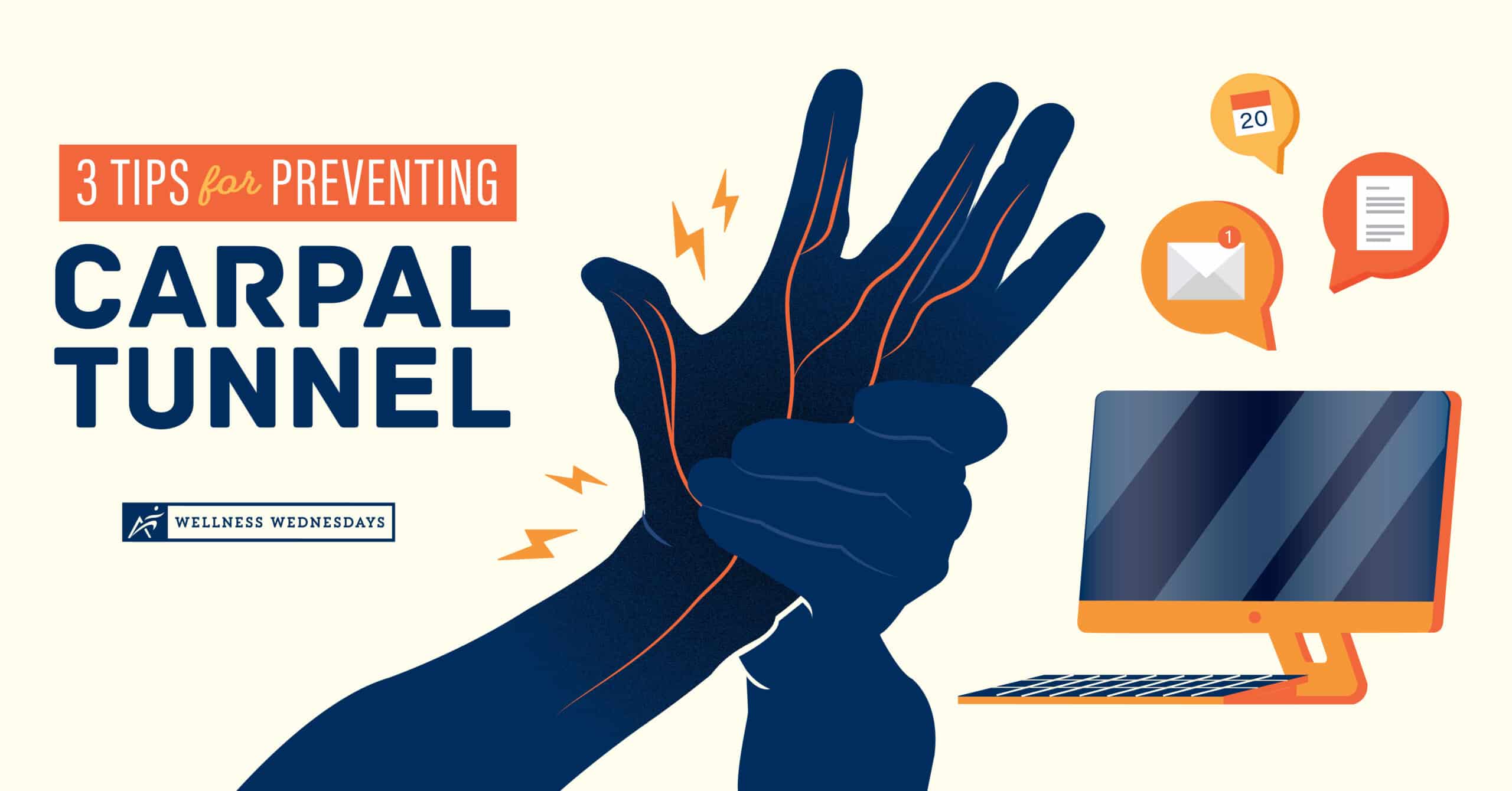Our wrists play a vital role in everyday life, especially when it comes to most jobs, whether it is office work or manual labor like construction or farming. Repetitive hand motions and constant movement can lead to wrist pain, tingling, and numbness often associated with carpal tunnel syndrome. Learn how to keep your wrists happy and healthy throughout the work week with these three tips that can help prevent carpal tunnel.
What Is Carpal Tunnel Syndrome?
The carpal tunnel is a small passageway in the palm side of the wrist. Its unique structure allows the median nerve to travel through the wrist and into the hand and fingers. Due to the narrowness of the carpal tunnel, the median nerve is highly susceptible to becoming compressed leading to conditions like carpal tunnel syndrome.
This complicated condition is known for causing:
- Wrist pain
- Numbness and tingling
- Weakness in the hands and fingers.
Repetitive wrist and hand movements or injuries like wrist sprains or fractures can eventually progress into carpal tunnel syndrome.
How to Help Prevent Carpal Tunnel
Unfortunately, anyone can develop carpal tunnel syndrome. Some occupations, such as manufacturing, construction, and office work, may cause a higher risk of development. If your job consists of typing or writing for prolonged periods, fast reflexes, or performing manual labor, follow some of these tips below to ensure you’re protecting your wrists and working to reduce your risk.
1) Wear Proper Wrist Protection
If you tend to wear wrist accessories throughout the day, like watches or bracelets, make sure the bands aren’t too tight around your wrists. Accessories that are too constricting can irritate your nerves, especially while working. If your job is more hands-on or labor-intensive, make safety your priority. Wear protective gear like gloves, wrist wraps, or braces to help provide cushioning and protect your wrists from both traumatic and overuse injuries.
2) Reduce Repetition
Whether you’re typing on a keyboard or painting a masterpiece, your wrists need a break from repetitive movements. When performing repetitive tasks that require your full attention, your grip may become more awkward or tighter than necessary.
Additionally, poor wrist form, such as gripping too tightly, twisting too forcefully, or overextending the wrist, can cause the tissues in your wrist and arm to inflame. This can further constrict the median nerve. Taking a few minutes to decompress and stretch at work can not only help you mentally reset and reduce stress but can also help relieve any built-up tension.
3) Improve Wrist Mobility and Strength
With exercises that improve wrist mobility and arm strength, you are preparing your wrists to do more repetitive movements required for our jobs like typing, twisting, pushing, and pulling.
Try these three quick exercises that can help release tension and strengthen your wrists.
*Disclaimer: Always consult with your doctor before starting any exercise program. If you experience any numbness, tingling, or reproduction of your symptoms, please contact your doctor.
Airrosti Provides Fast Wrist Pain Relief
Carpal tunnel syndrome can hinder your ability to perform day-to-day tasks, as well as successfully work. If these carpal tunnel syndrome tips aren’t quite doing the trick and you are still experiencing symptoms, schedule an appointment with Airrosti, either in-person or remotely!
An Airrosti Provider will assess your condition and combined with hands-on manual therapy, will create a personalized treatment plan to help promote improved mobility and strengthen your weakened wrists. In addition, you will also receive resources and tools to help continue your recovery at home.
For more information, call us at (800) 404-6050.
Read our Medical Disclaimer here.









